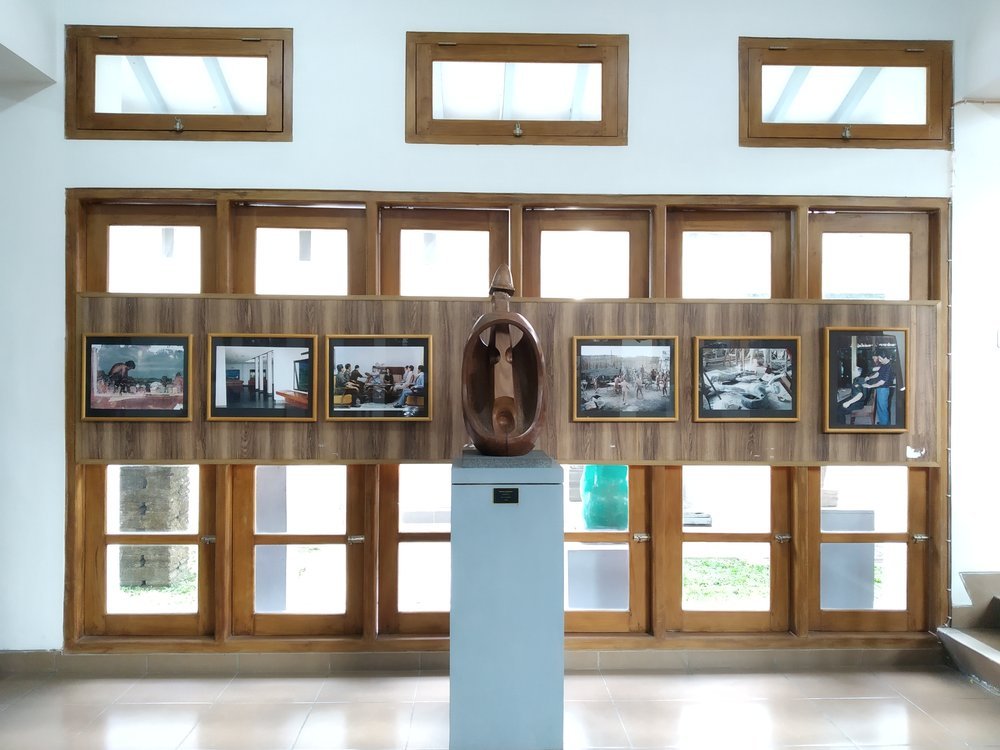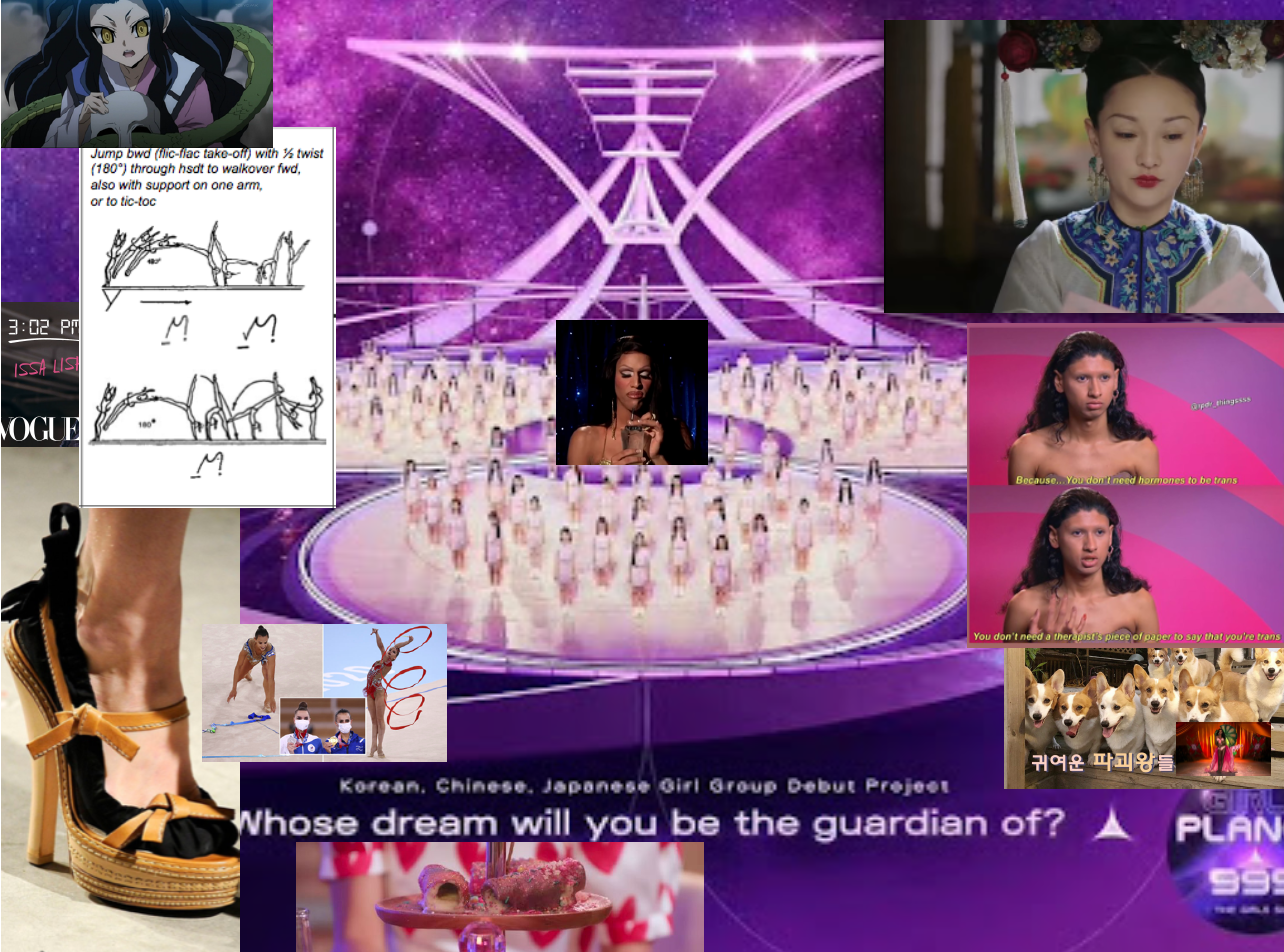In Conversation with Grace Samboh
On the importance of archives
By A&M
Grace Samboh. Photo by Julian Abraham “Togar”.
Grace Samboh is an Indonesian curator and researcher for Hyphen. A&M speaks with Grace to find out about her multifarious work on art from Indonesia.
Hyphen is focused on (re)reading Indonesian contemporary arts practices and putting them into historical context. What motivated it and what have you been working on?
I started it with my best friends Pitra Hutomo and Ratna Mufida. There are all these amazing stories about the past and many of them are stored in the Indonesian Visual Art Archive (IVAA). However, many of them are disconnected and fragmented. Our first big project was about the Gerakan Seni Rupa Baru Indonesia (GSRBI, or Indonesian New Art Movement) which many believe to be the beginning of contemporary art practice in Indonesia. However, most would probably only be aware of five out of more than 40 artists associated with the movement. We have collected more than 200 works from various exhibitions involving GSRBI, both in photographs as well as quotes from the media and interviews. It has been a long but rewarding journey putting this material together, we hope that it engenders critical conversations about the movement and artists involved.
It seems that all curators in Yogyakarta are “independent” and all art spaces are “alternative” ones. What do these labels really mean?
Sometimes, I find it funny to be addressed as an ‘independent curator’. In my context, I don’t call myself so because there is no other option other than being independent. True, there are dozens of artist-run or so-called alternative spaces; but what are they alternative to? What is the mainstream if the state is not quite doing much? Since the 1970s, all provinces of Indonesia have at least one cultural centre, so infrastructure does exist. However, they do not function in the manner that you’d expect state museums or galleries or art centres to. This is because the people working in these spaces are government employees and not art practitioners. Thus, they don’t oversee the programme so much as rent out the space to people who show what they want to at any point in time.
Everything is naturally interdependent in practice. Without functioning system, or the so-called mainstream, people make things happen. The labels of "alternative" and "independent" came from abroad where these mainstream institutions actually function.
You have researched archives and put up archive-based shows such as the ‘21 Years Retrospective of Jogja Biennale’ commissioned by the Indonesian Visual Art Archive and of course the ‘Fantasy World Supermarket' show at Mori Art Museum. Why should artists, and curators and galleries keep archives? What is the value in doing so?
For me, (self-)archiving is making available the materials in which you can become reflective. For example, I’d look at the previous exhibitions that I had done along with the list of artists I have worked with, and pause for a bit. How have I grown or changed? Do I maintain a rather fixed taste? What have I been observing? I see this process as a way of learning and growing.
There has been interest from the Japanese art community, with Mori Art Museum’s invitation in 2016 to realise the archive exhibition ‘Fantasy World Supermarket: Approaches, Practices, and Thinking in Indonesia Contemporary Art Since 1970s’ and in 2017 with the ‘SUNSHOWER – Contemporary Art from Southeast Asia 1980s to Now’. What did it mean to you as a curator to be involved in these overseas exhibitions and in what ways are exhibitions like these important for Indonesian/Southeast Asian art? What has reception been like for these shows both from the artists themselves and for the audience in Tokyo?
Interest towards art practices in Indonesia is not new. I guess we can say that it’s generally the same for Southeast Asian countries. The Japanese art community, particularly Fukuoka Asian Art Museum have been doing continuous research since the late 1970s. Many Australian art institutions and academics began engaging thoroughly since the late 1980s as well as expanded their political outlook to the Asia-Pacific region. The Japan Foundation invested more in the region from the early 1990s which also saw foreign cultural institutions changing the landscape (mainly French, German, and British; but in some parts also Swiss and the Netherlands). Singapore began its effort to represent the region from early 2000s.
For me, the experience of exhibition-making in Tokyo is as important as having it anywhere I am not familiar with, even within Indonesia, such as in Surabaya or Makassar. Knowledge about Southeast Asia is not that accessible and it is one of the reasons why I agreed to join the SUNSHOWER team. It was a survey exhibition involving more than two years of research that enabled me to look closer and learn about the different parts of the region. In making the show, many of us in the team were pretty excited to be able to see the earlier works from Fukuoka Asian Art Museum (Ajibi) that we had only known through photographs, books and stories. It was very interesting to see how artists across different generations approached similar materials and issues in very different ways.
'Fantasy World Supermarket', 2016, exhibition installation view. Image courtesy of Mori Art Museum.
Museum MACAN has been open for a while. What ripple effects have you observed in the Indonesian art scene at large so far?
Witnessing the institutionalisation of practices and spaces in the two decades after Reformasi, the government finally decided to have a state pavilion at the Venice Biennale from 2015. Previous pavilions were privately funded, as are numerous spaces and museums in Indonesia. In terms of timing, this development is congruent with the build-up to MACAN. I see MACAN as a result of the changes building up since 1998, rather than causing ripple effects.
Another example of congruent development between the state and the people is the Biennale Jogja. It is a program of the province’s cultural centre since 1988, the same year our first artist-run space was founded. It has since evolved into a contemporary art gallery, and also hosts residencies and exchange programmes. Today is it known as Cemeti – Institute for Arts and Society. Artists and practitioners also came together to start the Yogyakarta Biennale Foundation in 2010, which runs the biennale in close cooperation with the government.
With these changes happening in society, I feel like we can finally welcome the Reformasi in a bigger context. People are more confident in investing in the arts as we are slowly experiencing the government’s proactive stance in supporting the arts.
You spoke at ‘From a History of Exhibitions Towards a Future of Exhibition-Making; Second Assembly: Exhibition-Making Practices in China and Southeast Asia’ in the 1990s in November 2018, co-organized by Biljana Ciric and Rockbund Art Museum at Shanghai Study Centre. In brief, could you share with our readers what you spoke about, and also what you learnt from the assembly?
The title of my presentation was 'Whose order is this?' I spoke about exhibitions held in today's National Gallery of Indonesia (Jakarta) and shows organized by state apparatus abroad, in comparison to one exhibition held in Cemeti (Jogja). Through these case studies, I wanted to answer: where does the Indonesian government position themselves in the international art scene? What is the agency of the artists involved? What has changed after Reformation and who is being served by this change?
Jay Ho, 'Orion III, II and I' (from left), 2018, resin and gloss paint on canvas panel, dimensions variable. Image courtesy of the artist.
As an independent curator and researcher, what has been key to keeping the momentum going and realising projects? What is the process like as a curator from coming up with a concept to opening a show? What are the major challenges that you face?
Because there is no sustainable system, funding seems to always be a problem. However, I have recently shifted in thinking that it should not be seen as a problem since that’s just how things are. I’ve found it useful to go ahead to start something and just do it while I can, with the funding available at any one time. Something will come out of it, slowly but surely.
My major challenge is learning to decline, to say “not now”, and to make more time to realise an idea. It seems easy to agree to things in conversations, but I have to think about whether I can afford to invest my time and effort in them.
What projects are you working on?
With Hyphen, we are currently designing the Indonesian New Art Movement book which I hope will be done by March. We are also planning an archive show of Edhi Sunarso with Rubanah. Sunarso is the sculptor who made the first set of national monuments in Jakarta, and this exhibition involves contemporary artists whose practices researched his dioramas. Hyphen has recently Sunarso's archive at his own museum which is not open to the public but accessible by appointment.
For myself, I am beginning a new phase of research about the higher (visual) art education across Nusantara. I do not know yet where this will bring me but I want to trace the changes within the acts of passing of knowledge in dialogue as society changes. I hope that this can be my PhD thesis.
The interview was conducted via a Skype conversation and this is an abridged transcript by A&M.
















